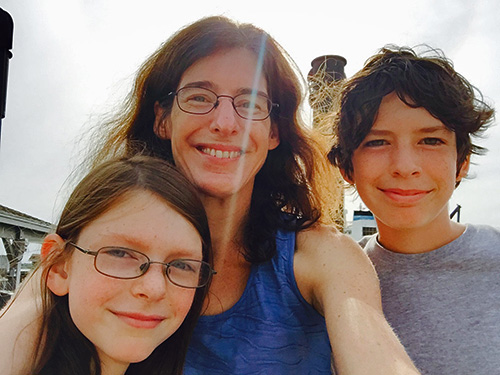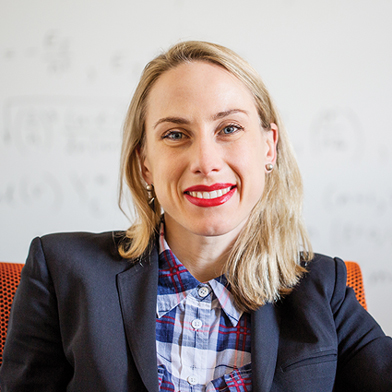 In early October, the Center for Sensorimotor Neural Engineering (CSNE) hosted its third event in the new Women’s Career Mentoring Series featuring Dr. Adrienne Fairhall. Dr. Fairhall is co-leader of the CSNE’s Computational Neuroscience Research Thrust and Associate Professor in the Department of Physiology and Biophysics at the University of Washington. This lunch-time event brought together female students, faculty, and staff at the University of Washington. Since this month’s event directly followed the CSNE’s Annual Retreat, we were fortunate to also welcome some women from CSNE partner institution San Diego State University (SDSU).
In early October, the Center for Sensorimotor Neural Engineering (CSNE) hosted its third event in the new Women’s Career Mentoring Series featuring Dr. Adrienne Fairhall. Dr. Fairhall is co-leader of the CSNE’s Computational Neuroscience Research Thrust and Associate Professor in the Department of Physiology and Biophysics at the University of Washington. This lunch-time event brought together female students, faculty, and staff at the University of Washington. Since this month’s event directly followed the CSNE’s Annual Retreat, we were fortunate to also welcome some women from CSNE partner institution San Diego State University (SDSU).
Engage and Enable Blog
The aim of this blog is to show what’s happening at the Center for Neurotechnology among its faculty, student and staff members. To learn more about the center and its work, visit our Feature Stories page.
At some point in your life you’ve probably experienced feelings of inadequacy. For example, you’re attending your first conference and are completely overwhelmed by all of the presentations and posters. The biggest thing on your mind is that you weren’t meant to be here, and the selection committee chose your research by mistake or because they were being nice. Instead of being proud of your accomplishments, you’re terrified that your “ruse” will be found out if you can’t answer questions the right way. For many individuals, especially females and minorities, the feelings of “Imposter Syndrome” are ever present in the back of their minds despite being incredibly successful in the fields of STEM (Science, Technology, Engineering, and Math).
While applying to graduate schools and, specifically, to the University of Washington, Gaurav Mukherjee came across the website for the Center for Sensorimotor Neural Engineering. During his visit to Seattle, he spoke with CSNE Executive Director Eric Chudler, who connected him with a few graduate students.
He liked what he saw at the UW and, more specifically, at the Center. “The University of Washington was of interest to me because of the collaborative atmosphere that’s formed across disciplines,” he said. “CSNE was the first group that I found at the UW that brought this more into clear perspective.”
 Most high school students would be fortunate to land an internship during their four years of school. But Larissa Ho, a recent graduate of TAF Academy in Kent, Washington, has had four summer internships, including a stint at Google.
Most high school students would be fortunate to land an internship during their four years of school. But Larissa Ho, a recent graduate of TAF Academy in Kent, Washington, has had four summer internships, including a stint at Google.
Her most recent internship was a lab-related experience known as the Young Scholars Program at the Center for Sensorimotor Neural Engineering.
 Today, MIT Technology Review revealed its annual list of Innovators Under 35. For more than a decade, the company has recognized a list of talented technologists whose work has great potential to transform the world. For her work in the field of nanotechnology and materials, Polina Anikeeva—who is a lead investigator at the CSNE—has been recognized as a pioneer on the list.
Today, MIT Technology Review revealed its annual list of Innovators Under 35. For more than a decade, the company has recognized a list of talented technologists whose work has great potential to transform the world. For her work in the field of nanotechnology and materials, Polina Anikeeva—who is a lead investigator at the CSNE—has been recognized as a pioneer on the list.
Dr. Anikeeva, assistant professor in the Department of Materials Science and Engineering at MIT, took some time to reflect on the award and shared a few of her secrets for success.
